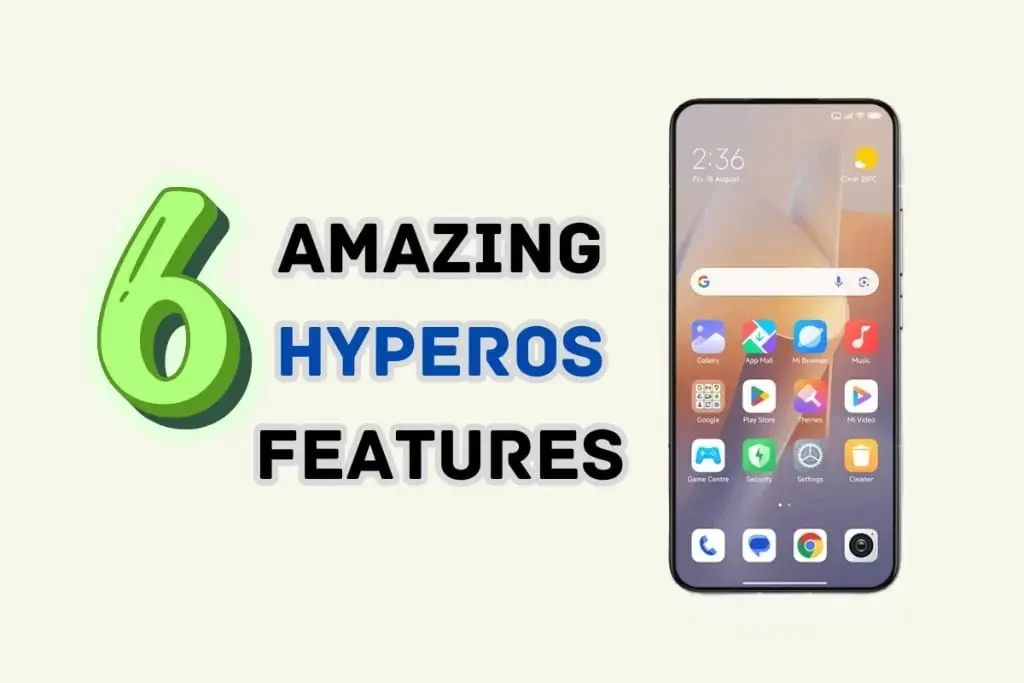Xiaomi’s HyperOS, its latest creation, is revolutionizing user experiences with innovative features. They have upgraded the core system to create an elegant and responsive user interface while adding functionalities that help enhance HyperOS’ overall capabilities. But which stand-out features of HyperOS deserve your consideration? Here we go over 6 worth mentioning ones to keep an eye out for.
Unveiling the Top 6 HyperOS Features
Are You Exploring Xiaomi Devices Running HyperOS Or Are You Anticipating an Upgrade To HyperOS From MIUI To HyperOS
These six features of HyperOS are sure to enhance your smartphone experience, whether or not you already own an upgraded Xiaomi phone running this OS upgrade. Likewise, for those transitioning from MIUI, an extensive guide comparing HyperOS to MIUI will aid a smooth transition.
1. Personalize Your Lock Screen
Say goodbye to mundane lock screens with HyperOS’ dramatic visual transformation in its new operating system that appeals positively to users. HyperOS allows extensive customizability of lock screens through designs, fonts and clock styles; users may modify font colors further while applying depth effects behind subjects on wallpaper to add their personal stamp.
Users have three distinct lock screen styles available to them: Classic, Rhombus and Magazine – each offering customization features to meet individual preferences and tailor the lock screen accordingly.
2. Improved Gallery Experience
While its design remains unchanged, HyperOS’ Gallery app now provides several useful features for users, including a smart photo cutout function allowing users to isolate subjects within images while editing backgrounds easily and a new “Recommended” tab with various functionalities for easy accessibility.
3. Dynamic Notch for Aesthetic Appeal
Xiaomi took inspiration from iPhone’s Dynamic Island feature to develop HyperOS’ version called Dynamic Notch, providing aesthetic appeal while at the same time increasing functionality and utility thereby enriching user experience. Although currently an aesthetic feature only, Xiaomi expects this new element to expand in functionality over time and enhance overall user experiences.
4. Simplified Control Center
HyperOS has made significant updates to its Control Center, featuring larger icons for greater visibility as well as an updated minimalist design by defaulting without icon labels; though this minimalist approach might present initial challenges for some users, restoring icon labels can easily be accomplished via one simple task. In addition, all icons now can now be seen at once on one scrollable screen for increased convenience.
5. Enhanced Multitasking Capabilities
HyperOS offers improved multitasking abilities compared to MIUI, providing seamless navigation between split screens and floating app windows with shortcuts designed for seamless use when note taking in meetings or managing multiple applications simultaneously. These shortcuts prove invaluable.
6. Simplified Bloatware Removal
HyperOS helps users by simplifying bloatware removal for long-standing issues on Xiaomi devices, known as bloatware. By uninstalling preloaded apps known as “bloatware”, HyperOS facilitates increased storage space liberation as well as potential performance boost.
Xiaomi is investing significant resources into HyperOS development as part of an attempt to create an ecosystem across their product offerings. While HyperOS draws inspiration from iOS features currently, future updates should include additional functionalities to further enrich user experiences and enrich their experiences.







Leave a Reply